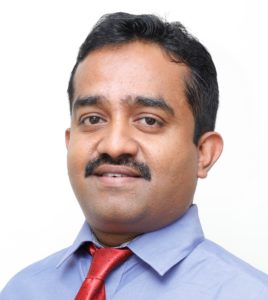
In a bid to promote Waste-to-Energy in India, the central government recently announced a grant of Rs 478 crore to WtE programmes for the remaining period of financial year 2019-20 (FY20). This includes a Central Financial Assistance (CFA) of Rs 400 crore with a physical target of 200 MW for municipal solid waste (MSW)-based WTE plants. The Ministry of New and Renewable Energy (MNRE) has also released revised guidelines for WtE projects. We spoke with Mr. Raj Kumar, Managing Director and CEO, Zonta Global Infratech Private Limited for his views on the government’s recent announcement.
The Government of India has announced a grant of Rs 478 crore to waste-to-energy projects, which includes a Central Financial Assistance (CFA) of Rs 400 crore for municipal solid waste-based WtE plants. What is your reaction to this announcement?
This is a welcome move. Finally, Waste-to-Energy (WtE) has come to the forefront of the Solid Waste Management Sector. It is clear that the government wants to address the problems in this sector by adopting WtE as the solution and the CFA is a step in the right direction. Going forward, we firmly believe that incineration-based WtE, which is similar to the model adopted by European countries as well as countries like China and Japan, is the best way forward to handle the waste crisis in cities across India.
Do you feel the MNRE’s new guidelines provide the financial security that developers like you need in order to successfully develop WtE projects in India?
As per the new rules, the CFA will be given after the completion of a WtE project and achievement of commercial operations for three consecutive months. This implies that the operator and financial institutions will have to wait until the project is completed. To push this sector, it would have been better if the CFA had been given during the construction stage.
The ideal situation would be to allocate the CFA in the concessional agreement which is signed by the Developers with Urban Local Bodies or state governments. There should be a clear understanding from day one and the Developer must know that funds are available before they go for financial closure.
For any WtE developer, financing poses a major issue. Our experience with banks is not great and some of the banks are even reluctant to lend during the implementation stage, regardless of such government schemes. We believe it would have been better if this grant was given during the construction stage on a milestone basis. Milestone payments would have been much easier and beneficial to the sector.
Many WtE experts believe that the MNRE’s new guidelines do not address some key financial concerns associated with massive WtE plants like tipping fee, etc…
The absence of a robust financial model in the WtE sector continues to be a cause of concern. We feel that at the Government level there is a lack of clarity on a workable financial model for WtE. Essentially, WtE projects are meant to reduce the volume of waste and electricity is a bye–product of this process. Globally, there are two streams of revenues available to the developers of WtE. The first one is from the processing fee or tipping fee, as we call it, and the second is the tariff for electricity generated.
A processing fee is essential to make the project viable along with a viable electricity tariff. The GoI must make an effort and understand the issues and come up with a financial model on the above lines wherein the Developers get a processing fee on a per ton basis and also a tariff like other economies. Of course, there are other financial options available but what is described above is the most common one.
Further, we suggest if Government can firm up a uniform power tariff exclusively for power generated from MSW-based WtE plants, it boosts confidence for developers as well as lending banks/ financial institutions to execute the projects and also saves time to achieve financial closure.
One of the most important things the government can do is to ask public sector banks and Development Financial Institutions (DFIs) to support the WtE sector.
Mr Raj Kumar, MD and CEO, Zonta Global Infratech Private Limited
The new guidelines state that power generation projects based on any WtE technology approved by the MNRE will be eligible for CFA. Do you believe that the government is finally recognizing the importance of WtE as a sustainable solid waste management option?
Yes. As per the new guidelines, power generation projects based on incineration, gasification, pyrolysis or a combination or any new technology as approved by MNRE shall be eligible for CFA.
In our experience, across the world, incineration-based technology is most suitable to deal with waste and provides a sound financial model that can potentially provide decent revenue margins, subject to the issues highlighted earlier. However, in India, the government has still not decided which WtE technology is ideal. As a Developer, we are baffled when some companies propose new and ‘magical’ WtE technologies, with which municipalities and state governments continue to experiment. From the stakeholder’s point of view, it is very important to settle this debate first.
In countries like China, Japan and across Europe, the debate over WtE technology has already been settled. China has over 300 WtE plants and all are based on incineration. Incineration has succeeded everywhere in the world in terms of its technology and commercial viability.
The Ministry has also approved a physical target of 257 MW for 2019-20 under the revised guidelines. How realistic is it in the current scenario?
Earlier, the physical target was 57 MW from Urban, Industrial and Agricultural Wastes/ Residues and now 200 MW has been added from MSW based Waste to Energy, making it 257 MW. In Bangalore alone, we produce about 5000 – 6000 tonnes of waste every day, which has the potential to generate about 100 MWeq. This is the kind of WtE opportunity which every large city in India currently has.
Having said that, it is still unclear how 257 MW will be computed by the MNRE. Will it is done in the current or next financial year or is it going to be computed after considering the construction period of a WtE plant, which is a minimum of two years?
We feel 257 MW is quite ambitious at this stage since we don’t have enough qualified projects on the table which satisfy the parameters in terms of technology and commercial viability, but, in two years’ time, it is very do-able.

Does India have enough serious players with the technical knowledge and expertise to design and implement projects of this scale in India?
There are many companies in the WtE sector already but for a vast country like India, we definitely need more. There are two groups of players in the WtE field: one, technology providers and, two, developers like us. We are seeing traction in the Indian market with a lot of global technology players entering in the last three to four years. They complement developers like us very well.
This emerging ecosystem indicates that we are moving in the right direction. Once the Government, gets it business model right, many more companies will come in. The new guidelines are thus a positive step in this direction.
What other steps can the government take to provide a further boost to large-scale WtE projects in India?
One of the most important things the government can do is to ask public sector banks and Development Financial Institutions (DFIs) to support the WtE sector. As a developer, we experience that many banks are reluctant to finance this sector. Admittedly, this sector has had a lot of misfires earlier. However, today the government has understood the needs of this sector and giving it an extra push. It should also ask the banks and give them clear direction to look at qualified projects and support with favorable financial terms and easy repayment schedules so that the companies can achieve the financial goals. Also, DFIs have to get involved and offer financial support to good developers.
Once all these financial issues are resolved, we are sure WtE will come up in a big way in India because it is the only way to handle the waste crisis in our cities.
This interview is part of a special series showcasing important stakeholders in India’s solid waste management sector. Watch this space for more in-depth conversations, views and analysis.



